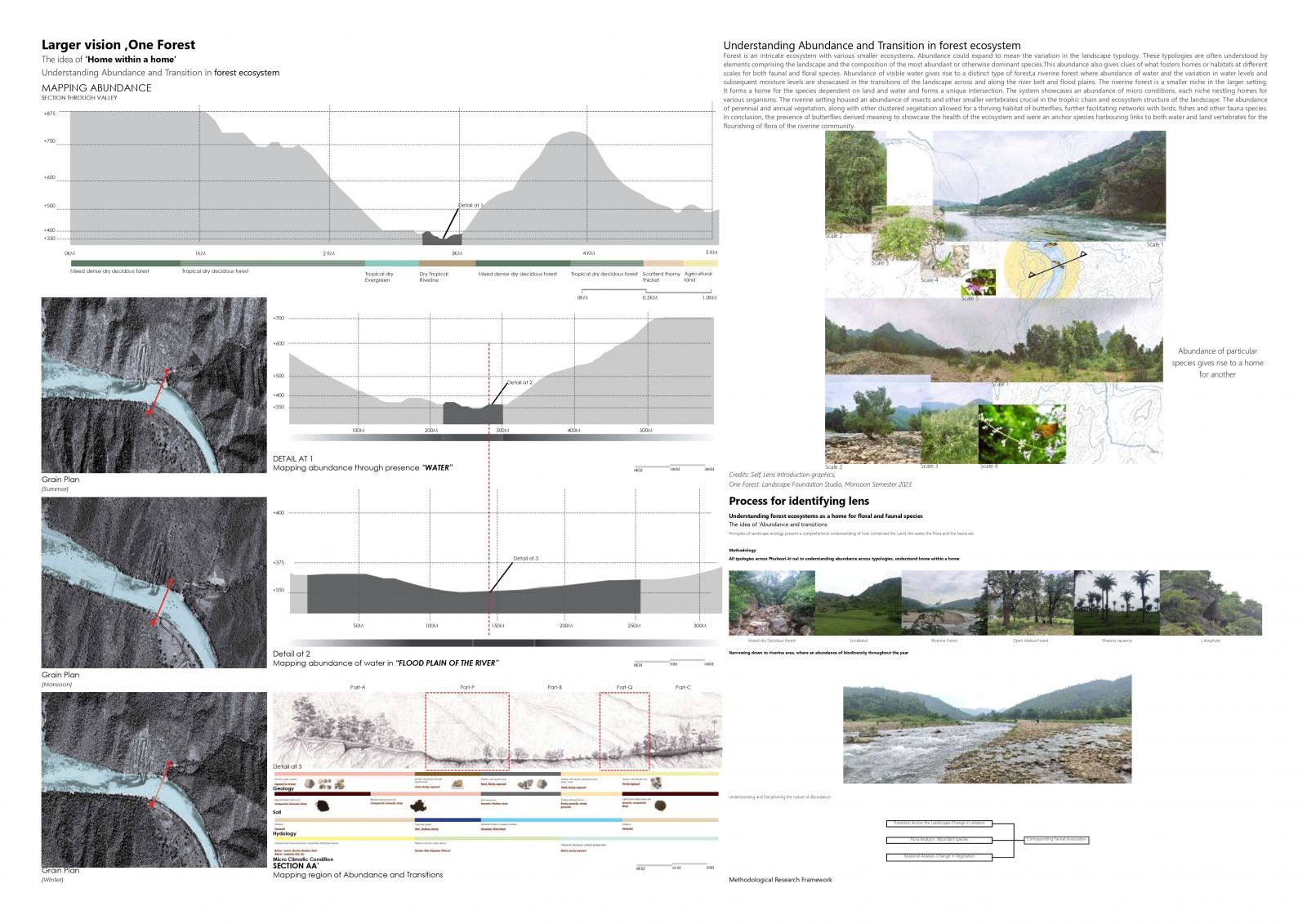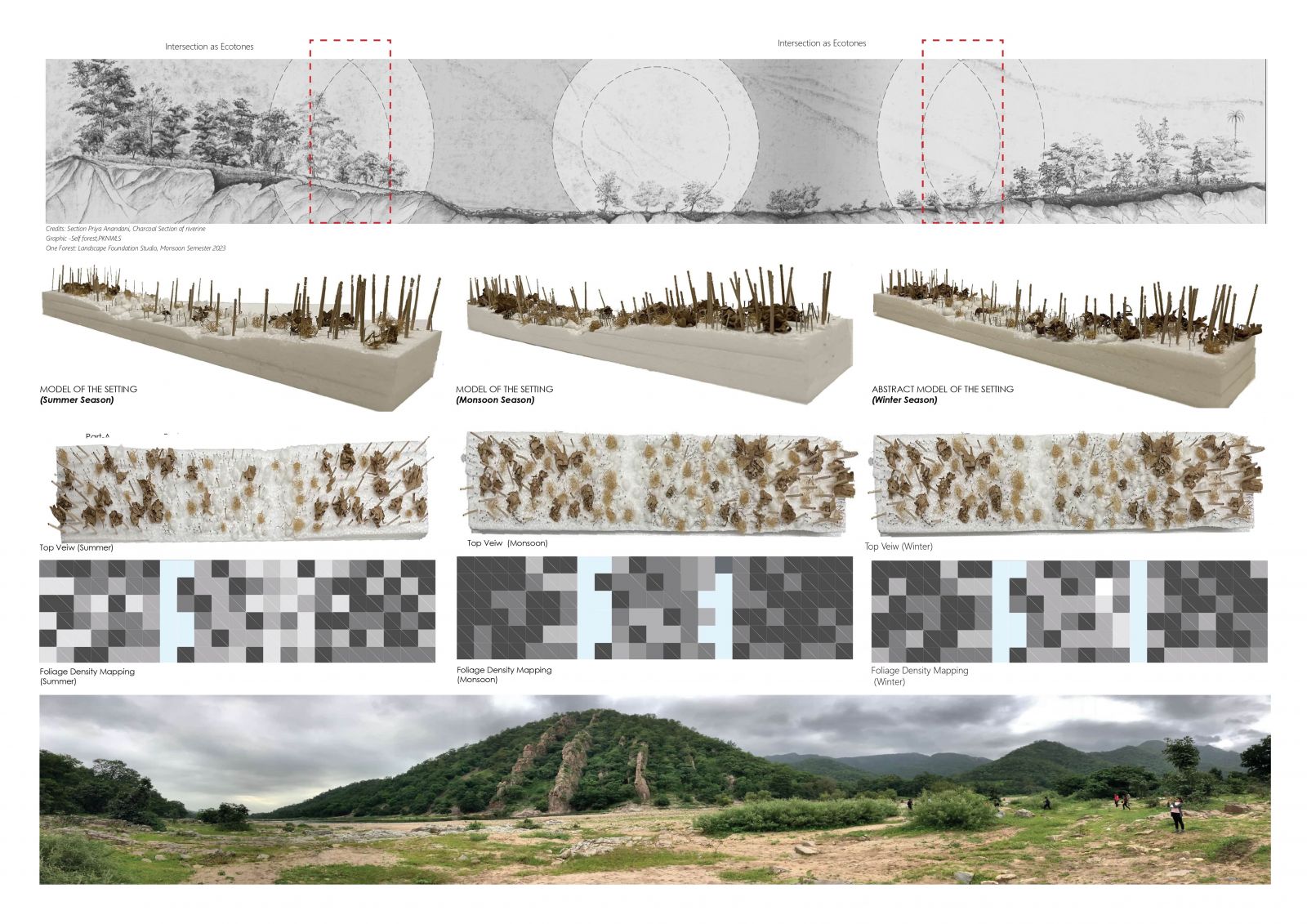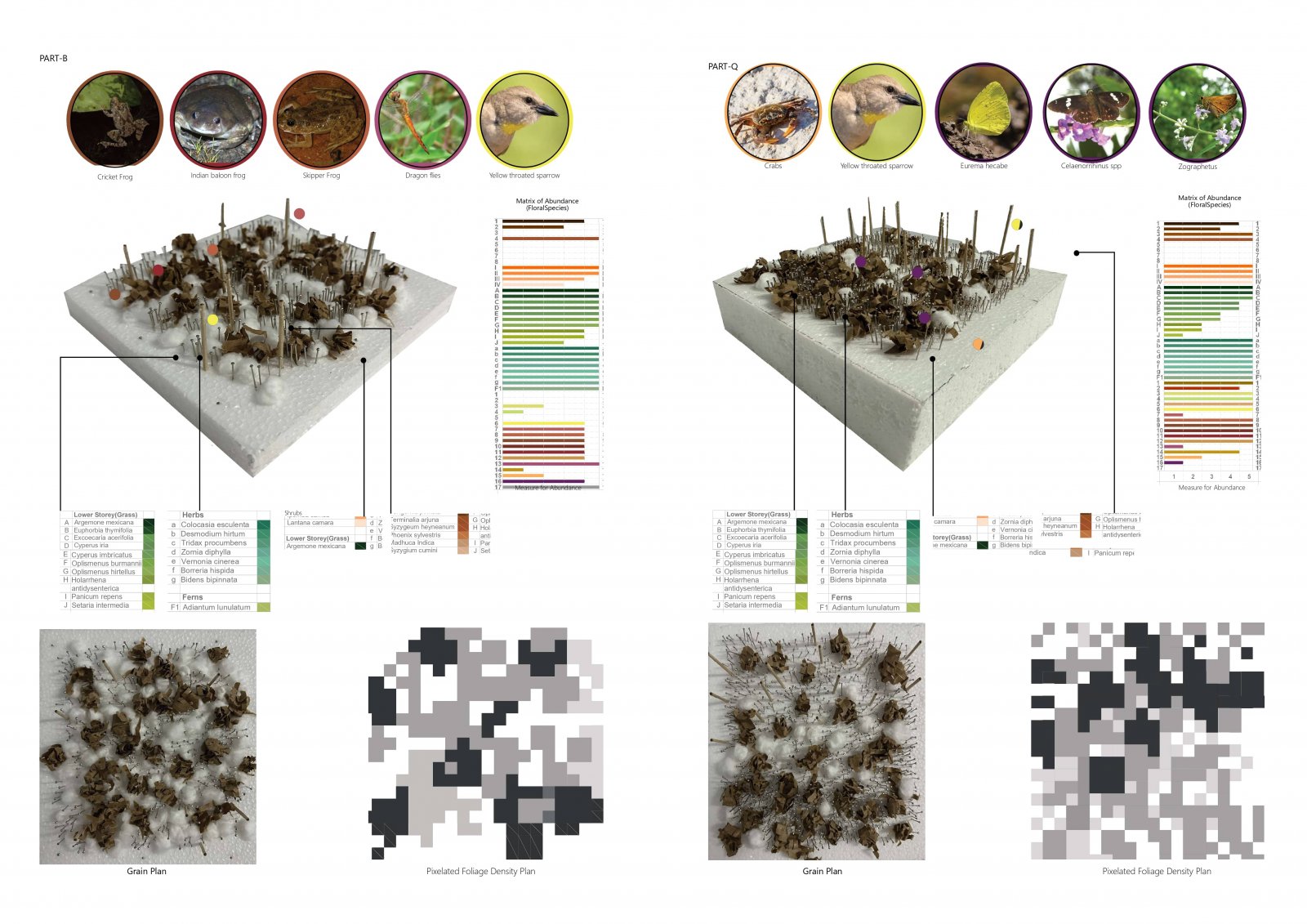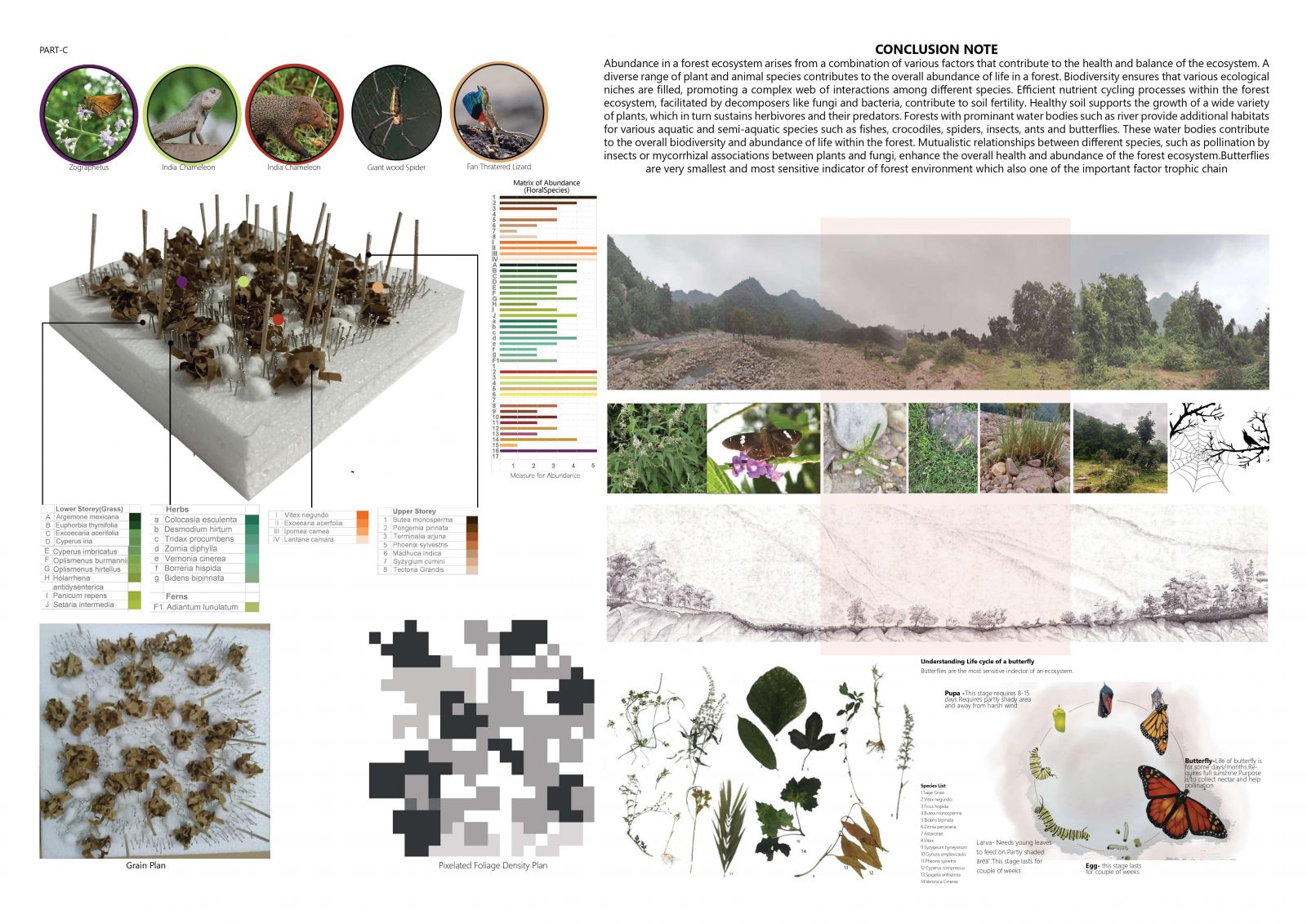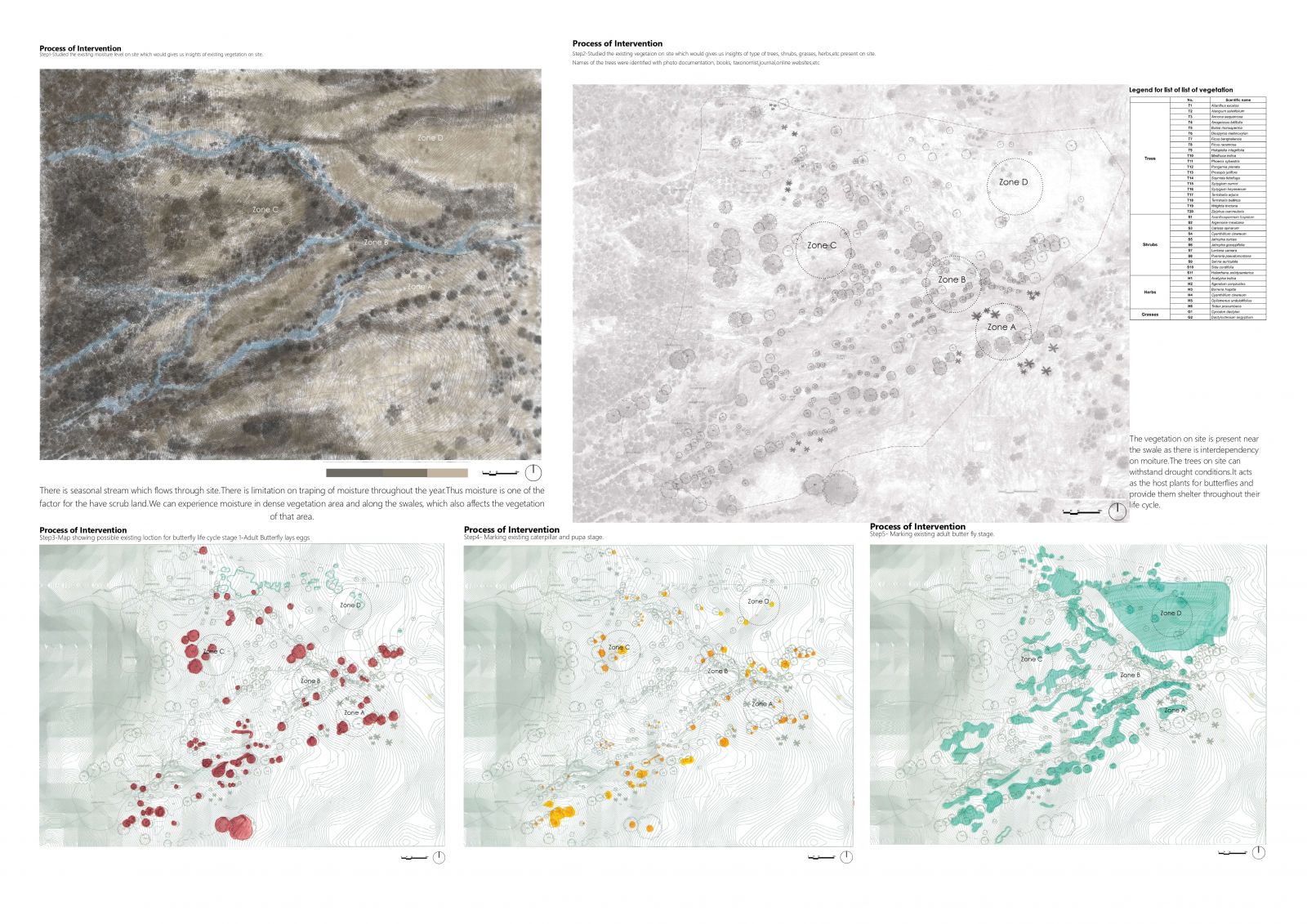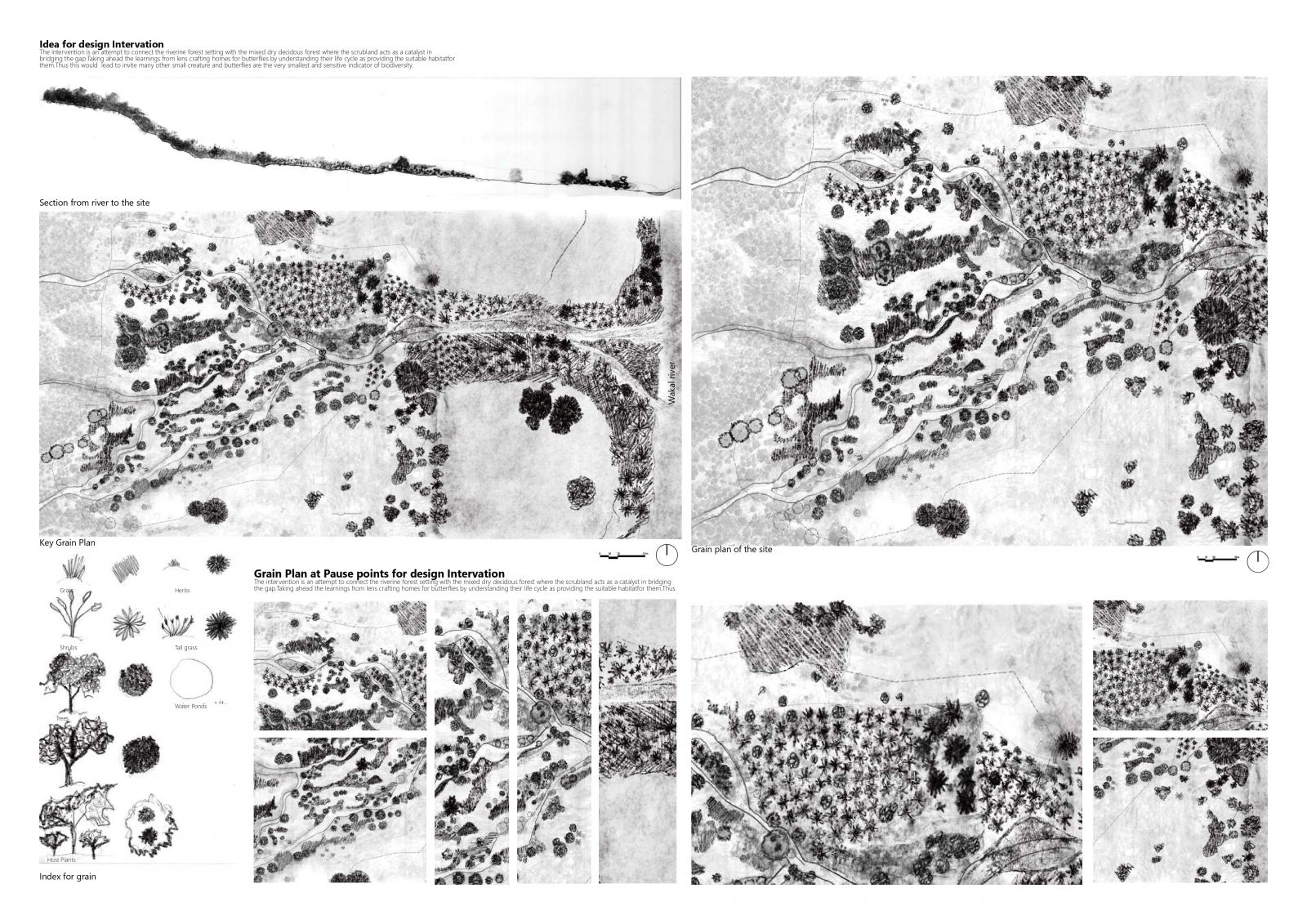- Student VAIDYA MUGDHA MAHESH
- Code PLA23226
- Faculty Architecture
- Tutor/s Nikhil Dhar,Rushika Khanna,Prasanna Mattikop,Priyal Shah
Forest is an intricate ecosystem with various smaller ecosystems. Abundance could expand to mean the variation in the landscape typology. These typologies are often understood by elements comprising the landscape and the composition of the most abundant or otherwise dominant species. This abundance also gives clues of what fosters homes or habitats at different scales for both faunal and floral species. Abundance of visible water gives rise to a distinct type of forest, a riverine forest where abundance of water and the variation in water levels and subsequent moisture levels are showcased in the transitions of the landscape across and along the river belt and flood plains. The riverine forest is a smaller niche in the larger setting. It forms a home for the species dependent on land and water and forms a unique intersection. The system showcases an abundance of micro conditions, each niche nestling homes for various organisms. The riverine setting housed an abundance of insects and other smaller vertebrates crucial in the trophic chain and ecosystem structure of the landscape. The abundance of perennial and annual vegetation, along with other clustered vegetation allowed for a thriving habitat of butterflies, further facilitating networks with birds, fishes and other fauna species. In conclusion, the presence of butterflies derived meaning to showcase the health of the ecosystem and were an anchor species harbouring links to both water and land vertebrates for the flourishing of flora of the riverine community.


